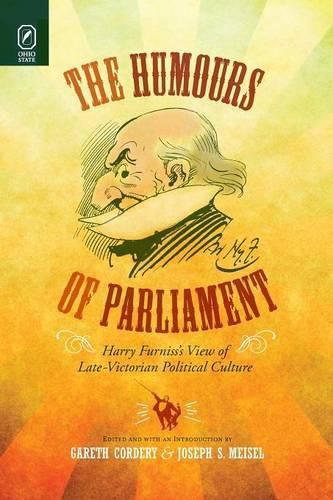Readings Newsletter
Become a Readings Member to make your shopping experience even easier.
Sign in or sign up for free!
You’re not far away from qualifying for FREE standard shipping within Australia
You’ve qualified for FREE standard shipping within Australia
The cart is loading…






This title is printed to order. This book may have been self-published. If so, we cannot guarantee the quality of the content. In the main most books will have gone through the editing process however some may not. We therefore suggest that you be aware of this before ordering this book. If in doubt check either the author or publisher’s details as we are unable to accept any returns unless they are faulty. Please contact us if you have any questions.
Harry Furniss (1854-1925), a leading contributor to Punch and other important illustrated magazines, was arguably the most significant political caricaturist and illustrator of the late Victorian and Edwardian eras. He was widely celebrated in his time, and his cartoons helped to define the political world in the public mind. The Humours of Parliament was Furniss’s hugely successful illustrated lecture that he staged throughout the U.K., North America, and Australia during the 1890s. Entertaining his audiences with anecdotes, mimicry, and jokes–along with the spectacle of more than 100 magic lantern slides–Furniss gave his audiences an insider’s view of the mysterious workings of Parliament and the leading political personalities of the day, such as Gladstone, Balfour, and Chamberlain. Reproducing some 150 images drawn from Furniss’s extensive graphic work, The Humours of Parliament: Harry Furniss’s View of Late-Victorian Political Culture, edited and with an introduction by Gareth Cordery and Joseph S. Meisel, presents Furniss’s unpublished lecture text for the first time. The extensive introduction places the show in its biographical, political, and performative contexts. Cordery and Meisel’s volume therefore both documents a pivotal moment in British political and social history and provides a rare case study of an important yet little studied nineteenth-century performance genre: the illustrated platform lecture.
$9.00 standard shipping within Australia
FREE standard shipping within Australia for orders over $100.00
Express & International shipping calculated at checkout
This title is printed to order. This book may have been self-published. If so, we cannot guarantee the quality of the content. In the main most books will have gone through the editing process however some may not. We therefore suggest that you be aware of this before ordering this book. If in doubt check either the author or publisher’s details as we are unable to accept any returns unless they are faulty. Please contact us if you have any questions.
Harry Furniss (1854-1925), a leading contributor to Punch and other important illustrated magazines, was arguably the most significant political caricaturist and illustrator of the late Victorian and Edwardian eras. He was widely celebrated in his time, and his cartoons helped to define the political world in the public mind. The Humours of Parliament was Furniss’s hugely successful illustrated lecture that he staged throughout the U.K., North America, and Australia during the 1890s. Entertaining his audiences with anecdotes, mimicry, and jokes–along with the spectacle of more than 100 magic lantern slides–Furniss gave his audiences an insider’s view of the mysterious workings of Parliament and the leading political personalities of the day, such as Gladstone, Balfour, and Chamberlain. Reproducing some 150 images drawn from Furniss’s extensive graphic work, The Humours of Parliament: Harry Furniss’s View of Late-Victorian Political Culture, edited and with an introduction by Gareth Cordery and Joseph S. Meisel, presents Furniss’s unpublished lecture text for the first time. The extensive introduction places the show in its biographical, political, and performative contexts. Cordery and Meisel’s volume therefore both documents a pivotal moment in British political and social history and provides a rare case study of an important yet little studied nineteenth-century performance genre: the illustrated platform lecture.